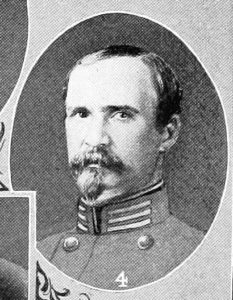V.E. Turner on the 23rd North Carolina
22 February 2023
Adjutant and later Quartermaster of the 23rd North Carolina Infantry V.E. (Vines Edmunds) Turner wrote the brief history of his regiment for Walter Clark’s Histories of the Several Regiments and Battalions from North Carolina, in the Great War 1861-’65 (Vol. II, 1901).
Here are a couple of excepts from his experience on the Maryland Campaign of September 1862:
[at Fox’s Gap on 14 September]
… Colonel Christie seeing that a still stronger force which was advancing against him could, while engaging his front, envelop his left, sent his Adjutant, V. E. Turner (the writer of this) to apprize General Garland of the situation. Finding that Garland had fallen, the Adjutant, making his way towards the rear of the Thirteenth and Twentieth, delivered the message to Colonel McRae, then in command of the brigade. Colonel McRae having no horse or Staff (General Garland’s Staff having gone off with his body) had no means of immediate communication with General Hill, and was unable to fill the gap and to avert the disaster apprehended by Colonel Christie.
The returning Adjutant after almost running into the hostile lines, reached the position of the Twenty-third just as it was abandoned. Colonel Christie, with his short, weak line, hopelessly enveloped and enfiladed, and seeing capture sure if he remained longer, had ordered the regiment to withdraw. This withdrawal, as it had to be precipitate in the extreme, was effected in great disorder down the steep and bewildering mountain side …
[at Sharpsburg on 17 September]
The Twenty-third regiment was here able to muster but few men, many being barefoot and absolutely unable to keep up in the forced marches over rough and stony roads. The brigade which since Garland’s fall, had been under the command of Colonel McRae, of the Fifth, went into action with Colquitt’s brigade in the Confederate center, and were advancing in perfect steadiness under a heavy artillery fire from the opposite hills, till the unaccountable “run back” occurred. This happened as follows: The Federals advanced against us in dense lines through a corn field, which concealed the uniforms, though their flags and mounted officers could be seen plainly above the corn tassels. As the blue line became more distinct, approaching the edge of the corn field, which brought it in our range, we commenced to fire and effectively held it in check. But some of Early’s men, who had come from the corn field, begged us not to fire, saying that their men were in our front. Some one in a regiment to the right of us also shouted: “Cease firing. You are shooting your own men.” Hands were also seen waving the line back. This confused the men. The artillery fire grew constantly hotter. Several of the regiments, nearly exterminated at Williamsburg, Seven Pines and Malvern Hill, had been recruited with raw men, largely ignorant of discipline and of the machine-like duties of a soldier.
At this the regiments on our right began to fall back, straggling through the woods in our rear. But we could plainly see that we were not firing on our friends, and in our front the enemy was firmly held in check, till we found that they were moving on our flank unopposed. This compelled us to retire, which was done in good order, considering the circumstances. The greater part of our regiment stopped in a sunken road (the famous Bloody Lane) and joining the main line there, fought the remainder of the day. General Hill says distinctly that the Twenty-third was kept intact and moved to the sunken road.
Notes
Clark’s Histories are available online from the Internet Archive: Vol I | Vol. II | Vol. III | Vol. IV | Vol. V
Captain Turner’s picture here is from Clark as well.



Please Leave a Reply